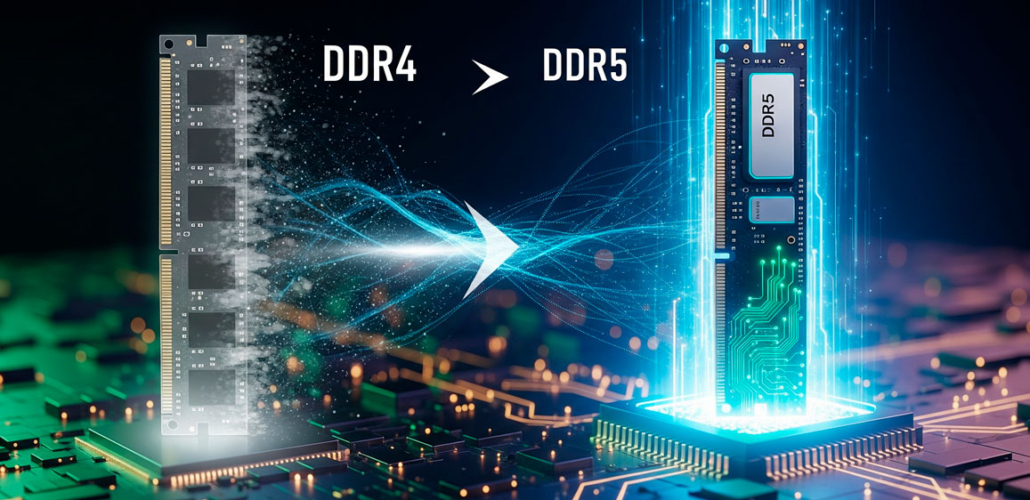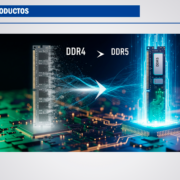DDR4 vs. DDR5: Why is now the time for transition?
¿DDR4 o DDR5?DDR4 or DDR5? Key comparison for your next upgrade
In a world where performance and efficiency are crucial, choosing the right RAM can make a significant difference to your business’s capabilities. The technology industry is in the midst of transitioning from the long-standing DDR4 to the powerful new DDR5.
But what does this change really mean, and why is now the time to upgrade?

Below, we analyse the key differences so that you can make the best strategic decision for your infrastructure:
Features |
DDR4 |
DDR5 |
Key Advantage of DDR5 |
Transfer Speed |
1600 – 3200 MT/s | 4800 – 8400 MT/s | Enables much faster data transfer, resulting in better overall system performance and greater ability to handle intensive workloads. |
Bandwidth |
25.6 GB/s (en un módulo de 3200 MHz) | 38.4 GB/s (en un módulo de 4800 MHz) | Higher bandwidth is critical for modern processors and graphics cards, eliminating bottlenecks and speeding up application execution. |
Energy Efficiency |
1.2 V | 1.1 V | Lower operating voltage reduces power consumption and heat generation, which is ideal for data centres and systems seeking efficiency. |
Architecture |
One 64-bit channel per module | Two 32-bit subchannels per module | The new architecture enables more efficient data access, improving latency and system responsiveness, especially in multi-threading. |
Capacity per Module (DIMM) |
Up to 32 GB (common) | Up to 128 GB (future) | The higher chip density per module allows for much higher memory capacity on the same motherboard, ideal for high-performance servers and workstations. |
Why is this the moment of transition?
The DDR4 market is experiencing a supply shortage and a significant increase in prices. Major manufacturers have ceased production to focus on DDR5, a technology that is not only superior in every way, but also offers an increasingly attractive cost-performance ratio.
Adopting DDR5 is not just an upgrade; it is a strategic investment in the future of your business. It allows you to:
- Ensure operational continuity: By not relying on the unstable supply of DDR4.
- Maximise performance: By preparing your infrastructure for the future demands of AI, big data and virtualisation.
- Optimise costs: By reducing energy consumption and leveraging the inherent efficiency of new technology.
At Matrix, we are committed to your growth. That is why we have developed a line of motherboards optimised for DDR5 technology.



